Ever felt a bit lost trying to master the art of outdoor cooking? Many of us have had those same campfire culinary struggles. But don’t worry, we’ve got your back! Armed with wisdom from wilderness chef extraordinaire, Kayla Sulak, and some tried-and-true experiences from my own open-air kitchen adventures, I’m offering up this comprehensive guide just for you.
Welcome to “Wilderness Cooking Techniques: 7 Ways To Success”, your ticket to savoring deliciously satisfying meals beneath the wide-open sky. Are you ready to embark on this tantalizing trailblazing journey?
Key Takeaways
- Safety is an important consideration when cooking in the wilderness. Plan ahead, keep your hands clean, and be cautious with fire and oil.
- Basic wilderness cooking techniques include fire building, steaming, boiling, using a Dutch oven, foil packet cooking, solar cooking, and grilling over a BBQ or gas burner.
- There are various outdoor cooking methods to choose from such as gas burners, charcoal BBQs, campfire cooking, thermal cookers, wood burner cooking, smokers,
- Each method requires specific tips and techniques for successful results. For example: staying upright with a gas burner; using natural charcoal on a BBQ; setting up the
Safety Considerations for Wilderness Cooking
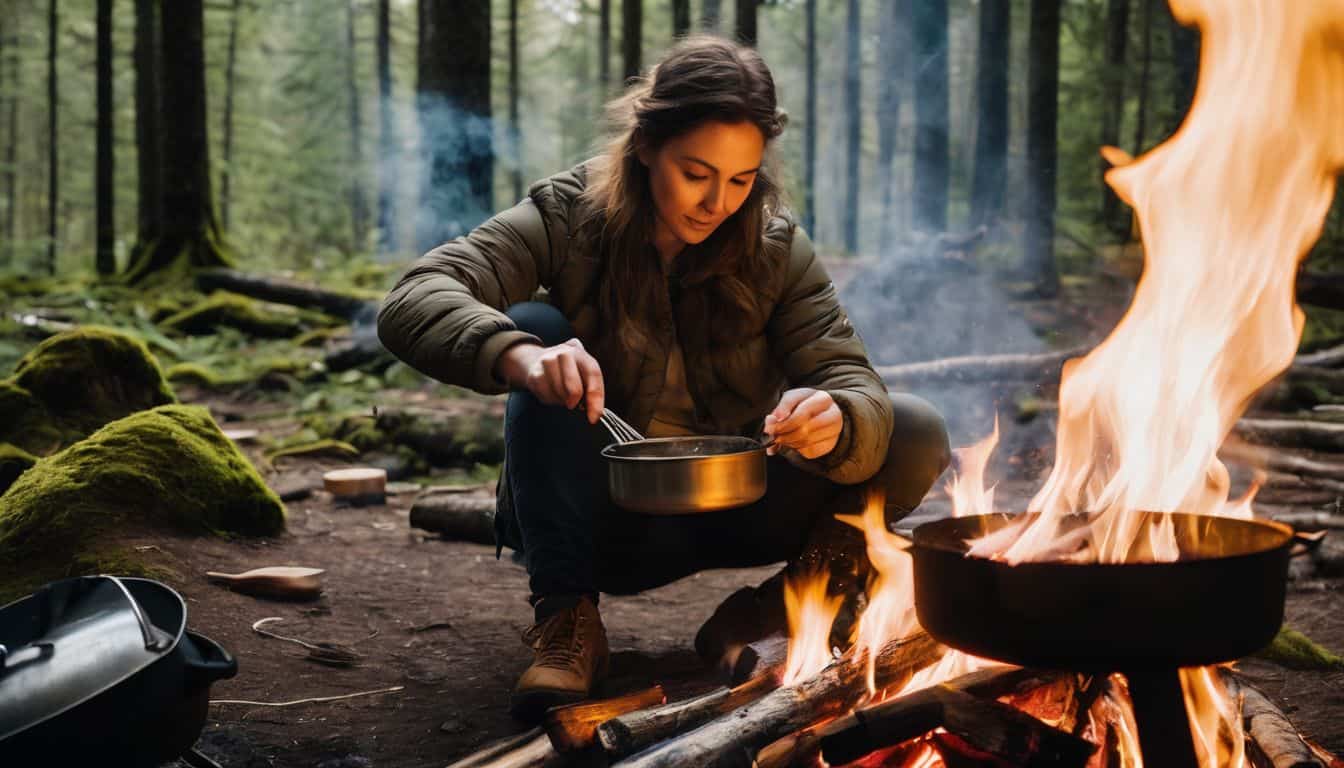
Cooking in the wild can be fun. But you need to stay safe. I always plan ahead for my trips. I pack all the things I will need to cook my food safely. Knives, pots, and pans are a must-have for me.
A campfire helps me cook my meals. But it is crucial to be careful when using one for cooking. You should never leave a fire alone or let kids get near it without an adult around. Keeping your hands clean before handling food is another good safety tip that ensures no germs get into the food you eat.
If you want to use oil while cooking, do so with care because it can catch on fire easily if not properly controlled.
Tip: Keep your cooking area tidy so there’s less stuff that could possibly cause accidents!
Basic Wilderness Cooking Techniques
I’ve learned a lot about cooking in the wild. Here, I’ll tell you some of the techniques I use.
- Fire building: This is a key skill for wilderness cooking. I make sure to build a fire using dry wood and leaves for easy lighting.
- Steaming: It’s one of my go-to methods. For instance, fish can be nicely cooked by this method over an open flame.
- Boiling: Cooking pots are handy for this technique. I boil water to make soups or cook rice and pasta.
- Using a Dutch oven: A versatile tool, great for baking bread or making stews.
- Foil packet cooking: It’s perfect when I want to cook vegetables or fish directly on the campfire.
- Solar cooking: When there’s plenty of sunlight, I like to use a solar cooker—a slow-cooking method that requires no fuel.
- Grilling over charcoal BBQ or gas burner: These methods give food a smoky flavor that is hard to resist.
Outdoor Cooking Methods
From gas burners to campfire cooking, explore the variety of outdoor cooking methods that will take your wilderness culinary skills to the next level.
Gas Burner
I use a gas burner a lot when I’m cooking outside. It’s easy to take with me on camping trips because it’s light and portable. Also, many types of gas burners exist for outdoor cooking.
For example, some people might use small camp stoves while others prefer the high heat from something like Jet Boil systems. One tip I have learned is not to turn the flame too high.
This only wastes your gas and takes more time to cook your food. Lower flames can help you save your gas supply longer which is very useful during long camping trips or survival scenarios!
Charcoal BBQ
I love using a charcoal BBQ when I’m cooking in the wilderness. It gives my food that delicious smoky flavor that can’t be beaten. Plus, it’s an affordable and versatile cooking method.
However, it’s important to be aware of the health hazards associated with charcoal grilling. Grilling meat at high heat and over smoke can create carcinogenic compounds that increase the risk of cancer.
So, while I enjoy the taste of grilled food, I make sure to use caution and moderation when using a charcoal BBQ.
Campfire Cooking
Campfire cooking is an exciting and delicious way to enjoy meals in the wilderness. As a survival enthusiast, I know that preparing food over a campfire can be intimidating for beginners.
However, with some preparation and planning, you can master the art of campfire cooking. One important thing to remember is to build your fire in a safe place, away from any flammable materials.
It’s also crucial to use the right equipment, such as cast iron pans or grates specifically designed for campfires. Popular campfire recipes include Campfire Corn On The Cob, Pie Iron French Toast, and Campfire Stew.
Thermal Cooker
Thermal cookers are portable and non-electric cooking devices that are perfect for outdoor adventures. They have insulated chambers that keep food hot and continue the cooking process without any electricity.
It’s as simple as boiling your food, then transferring it to the thermal cooker to finish cooking. You can take a thermal cooker anywhere, making it ideal for camping trips or road journeys.
With non-electric gadgets like solar ovens and thermal cookers, you can enjoy safe and easy outdoor cooking options. Plus, using a thermal cooker helps reduce fuel consumption, which is great for the environment and your wallet!
Wood Burner Cooking
Wood burner cooking is a traditional and old-fashioned method of outdoor cooking. It involves using wood cook stoves to prepare meals in the wilderness. To achieve success in wood burner cooking, it’s important to control the temperature and maintain it throughout the cooking process.
This can be achieved by using specific equipment designed for wood burner cooking. With these techniques and tools, you can enjoy delicious meals cooked over a wood fire, adding a rustic flavor to your outdoor dining experience.
Smokers
Smokers are a popular outdoor cooking method in wilderness cooking. They are used to cook meat and other foods over a fire, giving them a delicious smoky flavor. To use a smoker, you add wood chips to the fire, which creates that smoky aroma and flavor infusion.
Smoking is an ancient technique that has been used for centuries to preserve meat and enhance its taste. If you’re interested in smoking meat with an electric smoker, here are 7 helpful tips to get you started.
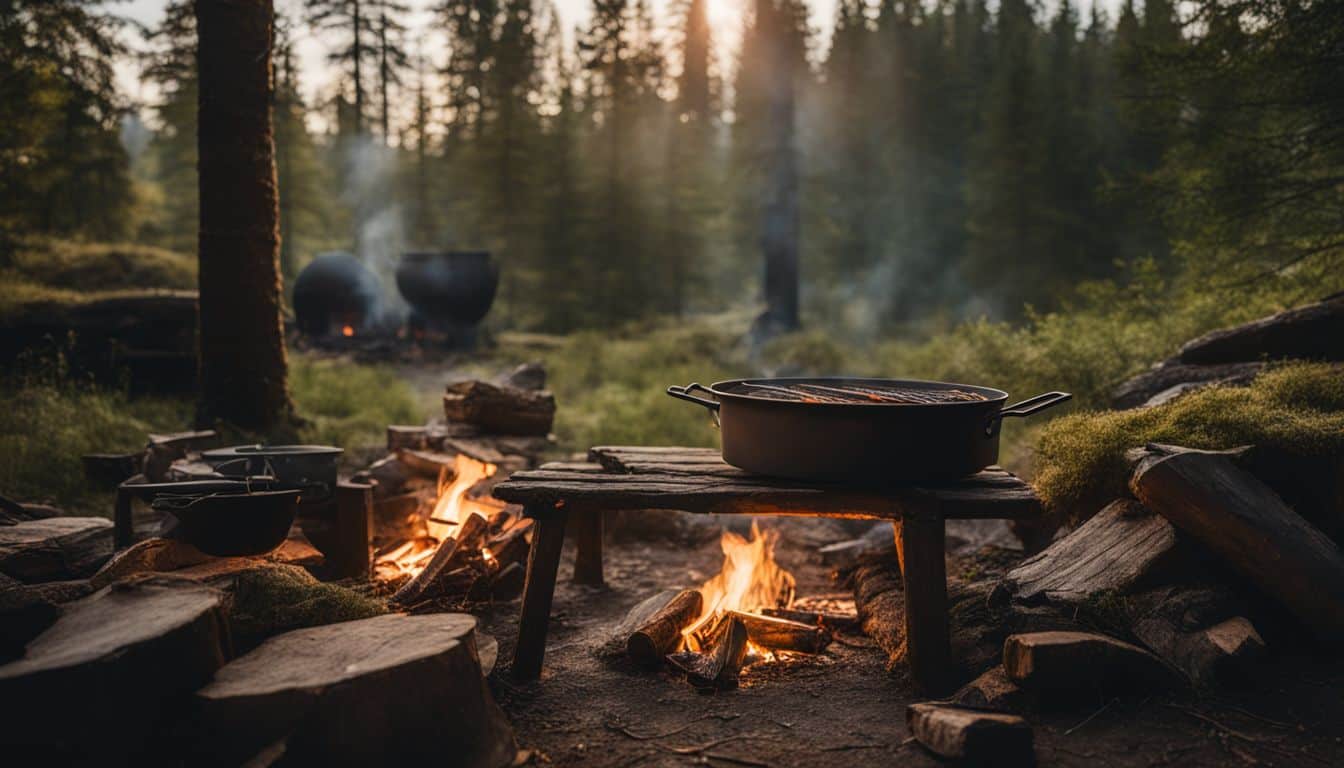
Fire Pit Cooking
Fire pit cooking is a fantastic way to add delicious flavor to your outdoor meals. People have been using fire pits for cooking for centuries, making it a tried and true method. When cooking on a fire pit, it’s important to use the right part of the fire.
Many people think that the flames are best for cooking, but actually, it’s better to use the hot coals instead. This will give your food an even heat and help prevent burning. Barbecue, grilling, roasting – there are so many possibilities when it comes to fire pit cooking! You can create amazing flavors that you just can’t get from traditional stovetop cooking.
So gather around the fire pit and enjoy some tasty meals in nature!
Dutch Oven Cooking
Dutch oven cooking is a popular method for outdoor cooking in wilderness settings. It’s important to understand and control the temperature for successful Dutch oven cooking. Maintaining a temperature of about 350 degrees Fahrenheit is generally recommended.
This versatile cast iron cookware can be used for slow-roasting chicken, pork, beef, and more over a campfire. It’s also useful in emergency preparedness situations but requires proper preparation and skill.
With a Dutch oven, you can create delicious meals while enjoying the great outdoors!
Foil Packet Cooking
Foil packet cooking is a great way to make delicious meals while camping. It’s easy to prepare and doesn’t require much cleanup afterwards. You can cook foil packets on a campfire, grill, or even in an oven if you have one available.
To ensure that your food cooks evenly, it’s recommended to use multiple layers of foil for insulation. Make sure to seal the packets tightly to prevent any leakage or loss of moisture while cooking.
The best part about foil packet cooking is that you can use a variety of ingredients – from meats and vegetables to seafood and desserts – so there’s something for everyone’s tastes.
Solar Cooking
Solar cooking is an amazing method that uses the sun’s energy to cook food. It is a renewable and sustainable way of cooking, as it doesn’t rely on fossil fuels. By harnessing the power of the sun, you can enjoy slow-cooked meals that are nutrient-rich and delicious.
Solar cookers can be made easily using simple materials and techniques, making it accessible for everyone. So next time you’re out in the wilderness, try solar cooking for an eco-friendly and energy-efficient way to prepare your meals.
Tips and Techniques for each Cooking Method
Preparing meals outdoors requires particular attention to specific cooking techniques associated with each method of cooking. In this section, we will explore tips and techniques for each wilderness cooking method that will ensure your meals are as delicious as they are nourishing.
| Cooking Method | Techniques |
|---|---|
| Gas Burner | Always stay in an upright position and keep it over a flat surface. Remember to turn off when not in use to preserve gas. |
| Charcoal BBQ | Use natural charcoal for a cleaner and more flavorful taste. Make sure to let it burn until it turns white-hot for even heat distribution. |
| Campfire Cooking | Set up your cooking area downwind from your sleeping and living areas to prevent smoke inhalation. Keep the fire small and manageable to ensure safety and efficiency. |
| Thermal Cooker | Ensure the food is heated sufficiently before being placed in the cooker. Stir occasionally to distribute heat evenly. |
| Wood Burner Cooking | Use seasoned hardwood for a slower and more sustained burn. Remember to cut food into smaller pieces for more even cooking. |
| Smokers | Use hardwood chips for a distinct, rich flavor. Maintain a low and slow heat for a tender, juicy result. |
| Fire Pit Cooking | Use a grate or tripod to stabilize your cookware and manage the distance between food and flame. Use the steam technique to maximize nutrient retention in food. |
| Dutch Oven Cooking | Preheat the oven before adding ingredients. Rotate the oven and lid every 15 minutes for even cooking. |
| Foil Packet Cooking | Use heavy-duty foil and always double wrap your food. Place the shiny side of the foil inward to retain heat and remember to turn the packet occasionally for even cooking. |
| Solar Cooking | Use a solar cooker that is lightweight, portable, and requires no fuel. Be patient, as solar cooking takes longer than traditional methods. |
These tips and techniques will guide you in your wilderness cooking endeavors and enhance your outdoor dining experience. Planning and preparation are the keys to success in wilderness cooking.
Choosing the Right Cooking Equipment
Choosing the right cooking equipment for wilderness cooking is important. Here are 7 ways to success in choosing the appropriate cooking equipment:
- Select equipment that is suitable for outdoor use.
- Ensure that the equipment is essential and necessary for your cooking needs.
- Consider the size and weight of the equipment, as you will need to transport it in the wilderness.
- Optimize your cooking experience by choosing equipment that is effective and reliable.
- Picking proper equipment will ensure that you can cook your food properly.
- Choose cooking equipment that is appropriate for the type of food you plan to cook in the wilderness.
- Having the right cooking equipment will make your wilderness cooking experience more enjoyable and successful.
Recipes for Wilderness Cooking
When cooking in the wilderness, it’s important to have delicious and easy recipes that can be prepared with limited resources. Here are seven recipes for a tasty outdoor meal:
- Foil Packet Chicken and Vegetables: Place chicken breasts, sliced vegetables, and seasonings in a foil packet. Cook over hot coals or on a campfire for about 20-30 minutes.
- Campfire Chili: Brown ground beef in a Dutch oven, then add diced tomatoes, beans, chili powder, and other spices. Let simmer over the fire for an hour or until flavors meld together.
- Grilled Salmon with Lemon and Dill: Season salmon fillets with salt, pepper, lemon juice, and fresh dill. Grill over medium heat until fish flakes easily.
- Dutch Oven Lasagna: Layer lasagna noodles, ground meat sauce, cheese, and repeat in a Dutch oven. Cook over campfire coals for about 45 minutes or until noodles are tender.
- S’mores Banana Boats: Cut a slit in a ripe banana and stuff it with chocolate chips and mini marshmallows. Wrap in foil and place on hot coals or grill until chocolate melts.
- Grilled Veggie Skewers: Thread chunks of bell peppers, zucchini, mushrooms, and cherry tomatoes onto skewers. Brush with olive oil and grill until vegetables are tender.
- Campfire French Toast: Dip slices of bread into beaten eggs mixed with cinnamon and vanilla extract. Cook on a greased griddle or skillet over the fire until golden brown.
Involve Kids in Wilderness Cooking
Involving kids in wilderness cooking is a great way to teach them important survival skills while having fun together. It promotes healthy eating habits and creates a strong bond with nature.
Cooking with kids can enhance their self-esteem and provide exercise as they learn to prepare meals outdoors.
Not only does involving kids in wilderness cooking benefit them individually, but it also teaches critical thinking skills and promotes teamwork. By engaging children in cooking activities, especially in school gardens, we can encourage them to make healthier food choices and develop a deeper appreciation for the natural world.
Remember, safety should always be a top priority when involving kids in wilderness cooking. Make sure they understand how to handle cooking equipment safely and stay away from open flames without supervision.
By teaching them about fire prevention and responsible food storage, we can ensure that this activity remains enjoyable and safe for everyone involved.
Overall, involving kids in wilderness cooking can be a rewarding experience that combines education with outdoor adventure. It provides an opportunity for children to learn valuable life skills while enjoying the beauty of nature around us.
So why not grab your camping gear, gather some fresh ingredients, and get started on an exciting culinary journey with your young ones?.
Wilderness Cooking Etiquette and Leave No Trace Principles
When cooking in the wilderness, it’s important to follow proper etiquette and adhere to Leave No Trace Principles. These principles are designed to minimize our impact on the environment and preserve the wilderness for future generations.
By practicing ethical cooking practices, we can enjoy our meals while being responsible stewards of the outdoors.
One key principle is to leave what you find. This means avoiding damaging or collecting natural resources like firewood, plants, or rocks. Instead, bring your own equipment and use designated fire rings or stoves for cooking.
This ensures that others can also enjoy the beauty of nature.
Another important principle is to properly dispose of waste. Make sure to pack out all garbage and food scraps so they don’t attract wildlife or pollute water sources. Use biodegradable soap when cleaning dishes, and strain any food particles before disposing of dishwater away from water sources.
Respecting wildlife is also crucial when cooking in the wilderness. Avoid feeding animals as it disrupts their natural behavior and can lead to dependency on human food. Keep a safe distance from wildlife and observe them from afar without disturbing their habitat.
By following these wilderness cooking etiquette guidelines and Leave No Trace Principles, we can have a positive impact on the environment while enjoying delicious meals in nature!
Importance of Proper Food Storage and Waste Disposal in the Wilderness
Proper food storage and waste disposal are really important when you’re camping in the wilderness. Why? Well, first of all, it’s about food safety. If you don’t store your food properly, you could attract animals like bears who want to get at your food.
And that can be dangerous for both you and the animals.
There are different methods for storing food in the wilderness. Some people bury their food to keep it hidden from animals. Others use smoking or sun-drying techniques to preserve their food for longer periods of time.
It’s also a good idea to use proper containers that are secure and won’t easily break.
And when it comes to waste disposal, it’s simple – don’t leave anything behind! That means packing out all your garbage and any leftover food scraps or wrappers.
Remember, we need to respect the environment when we go into the wilderness. So let’s be responsible campers and follow the Leave No Trace principles by properly storing our food and disposing of our waste.
Conclusion on Wilderness Cooking Techniques
In conclusion, mastering wilderness cooking techniques is essential for a successful outdoor adventure. By following the 7 tips provided in this article, such as planning your menu and bringing the right equipment, you can enjoy delicious meals even in the wild.
Remember to practice Leave No Trace principles and properly dispose of waste to protect our beautiful wilderness areas. So get out there, start cooking, and savor the flavors of nature!
FAQs on Wilderness Cooking Techniques
1. What are some wilderness cooking techniques I can use?
Some wilderness cooking techniques include campfire cooking, using a portable stove, foil packet cooking, grilling over coals, and using a Dutch oven.
2. Can I cook with just a campfire in the wilderness?
Yes, you can cook using a campfire in the wilderness by building a fire pit, controlling the flame intensity with rocks or logs, and using pots or skewers for food preparation.
3. How do I cook with a Dutch oven while camping?
To cook with a Dutch oven while camping, place it directly over hot coals or hang it from a tripod. Place food inside the pot and use the lid to create an oven-like environment for baking or slow-cooking.
4. What types of food can I easily cook in the wilderness?
Foods that are easy to cook in the wilderness include canned soups and stews, pre-marinated meats or fish fillets for grilling, vegetables wrapped in foil packets for roasting, and instant meals that only require boiling water.
5. Are there any safety precautions I should follow when cooking in the wilderness?
Yes, some safety precautions to follow when cooking in the wilderness include keeping flammable materials away from open flames, ensuring proper ventilation when using portable stoves indoors or inside tents,
and properly extinguishing fires before leaving your campsite.

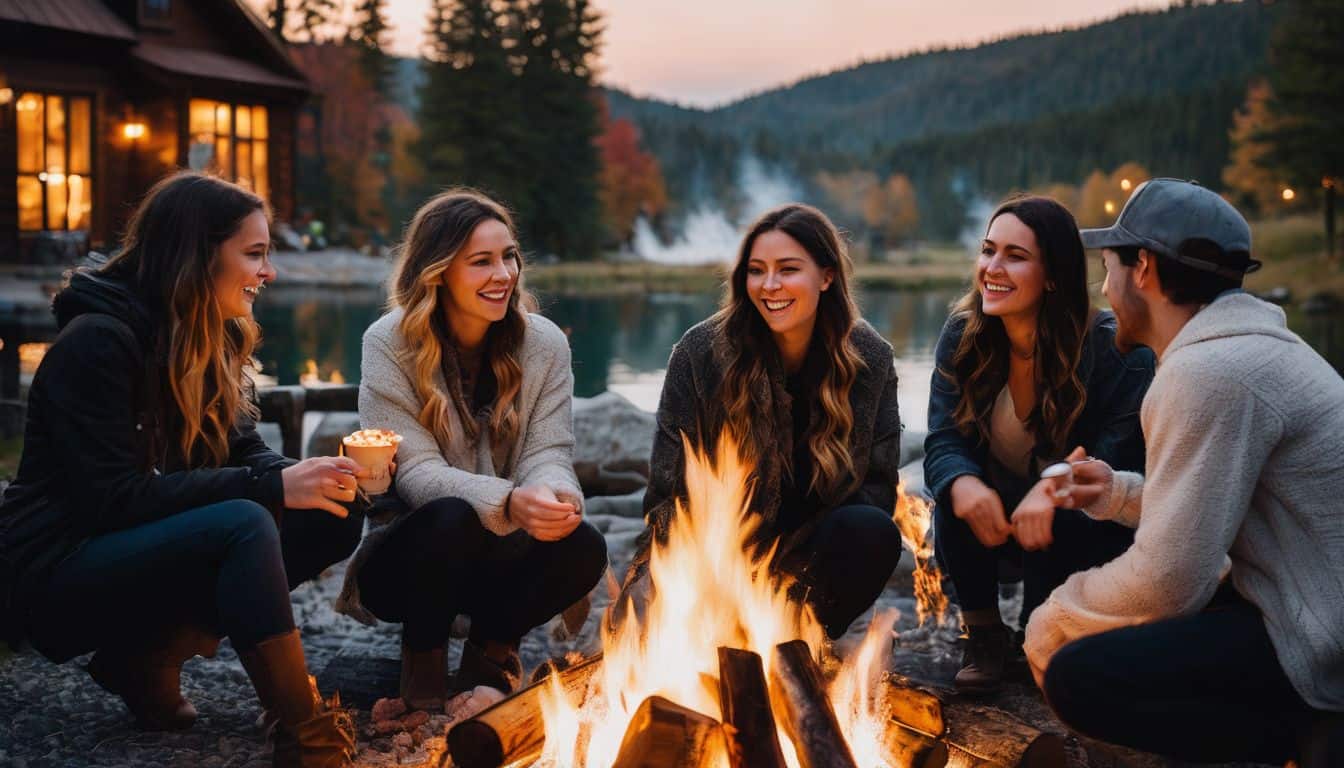

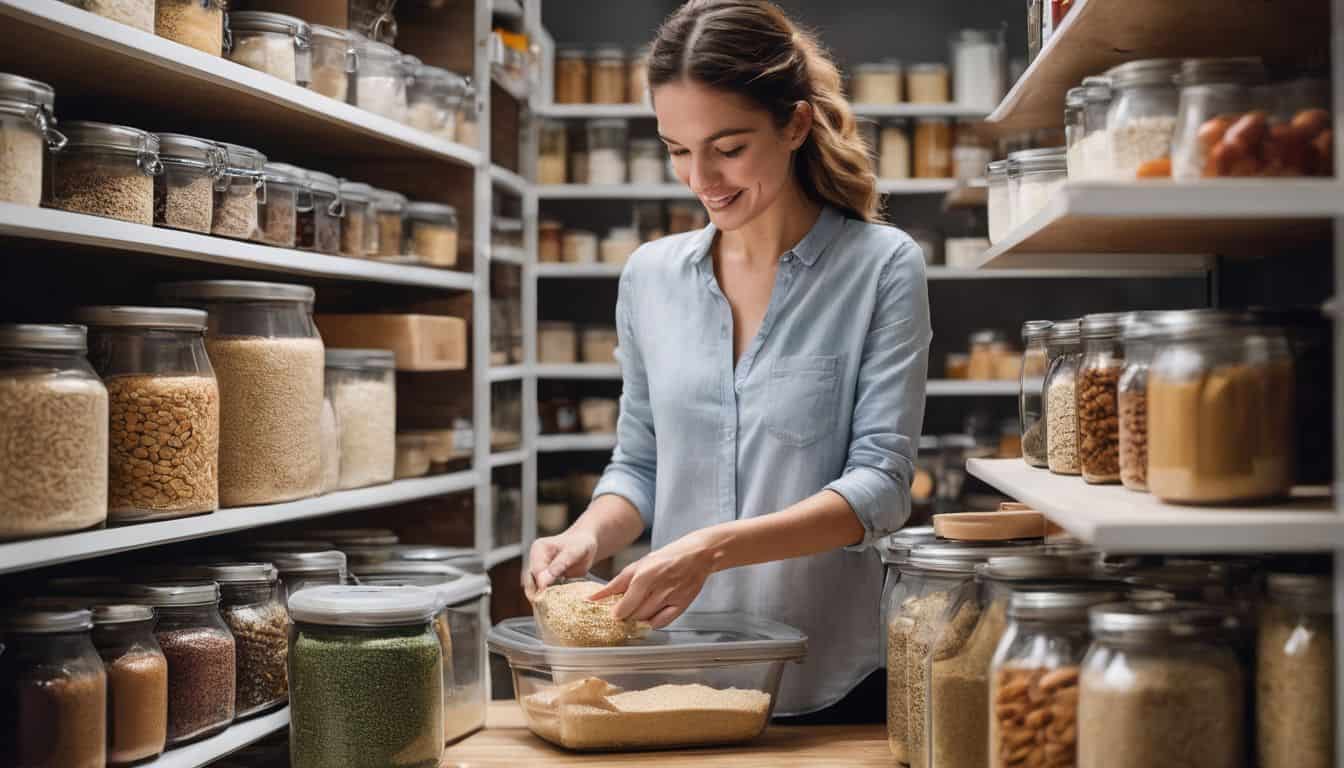
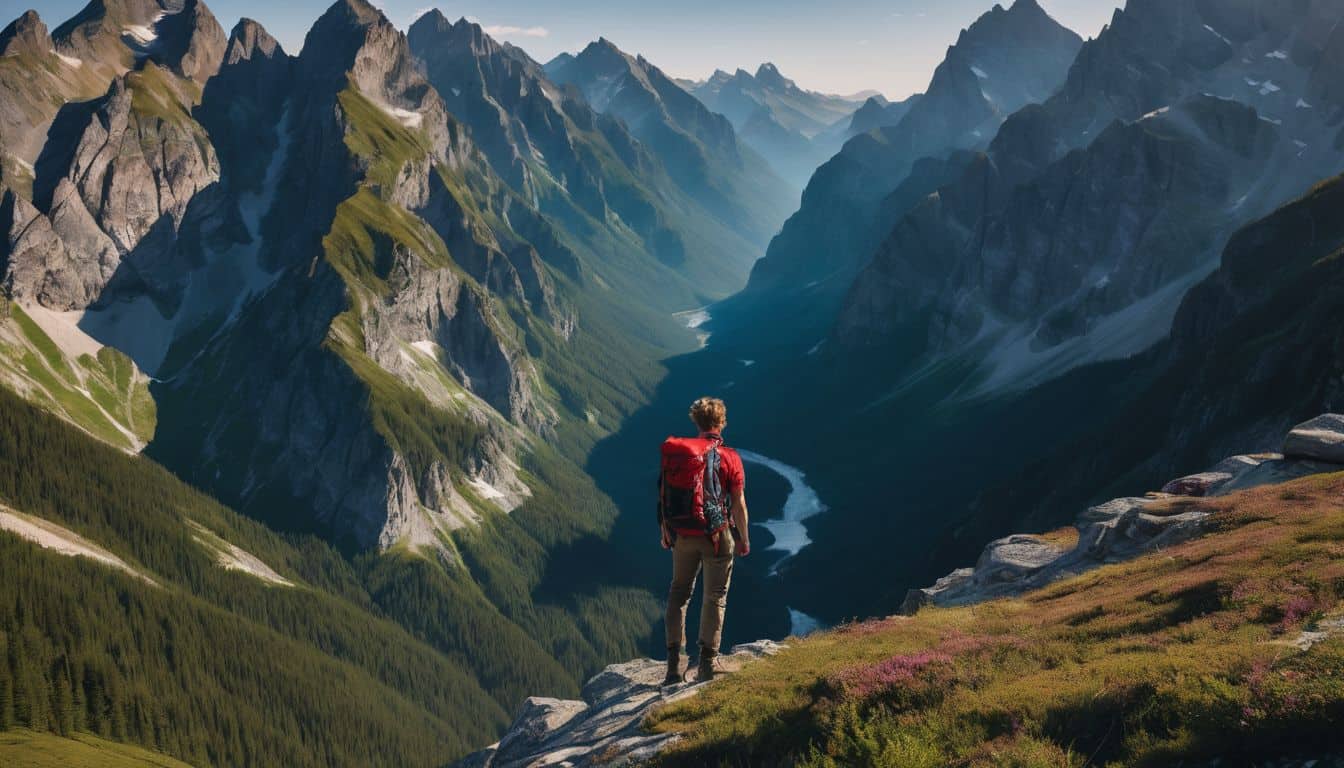
Leave a Reply